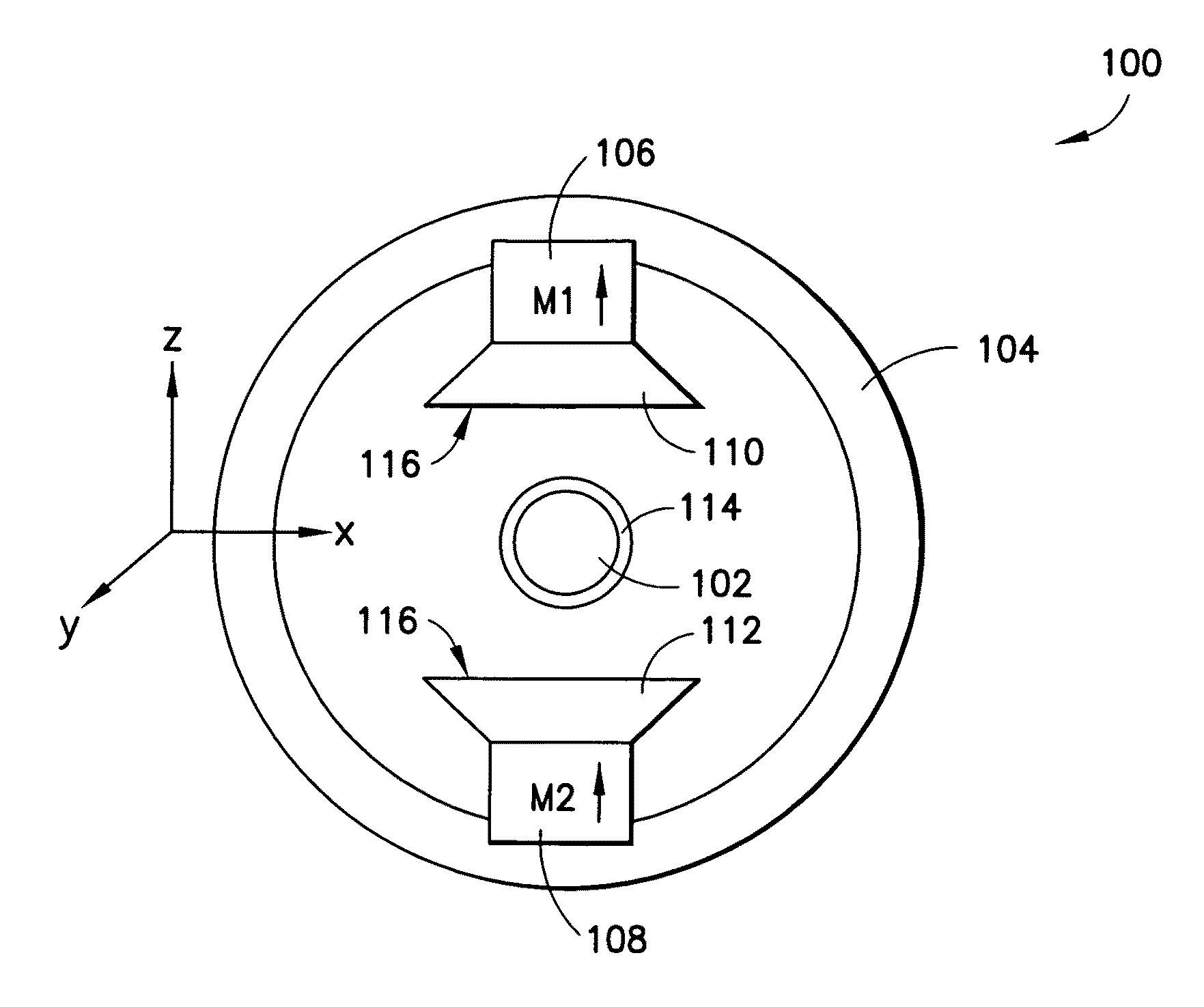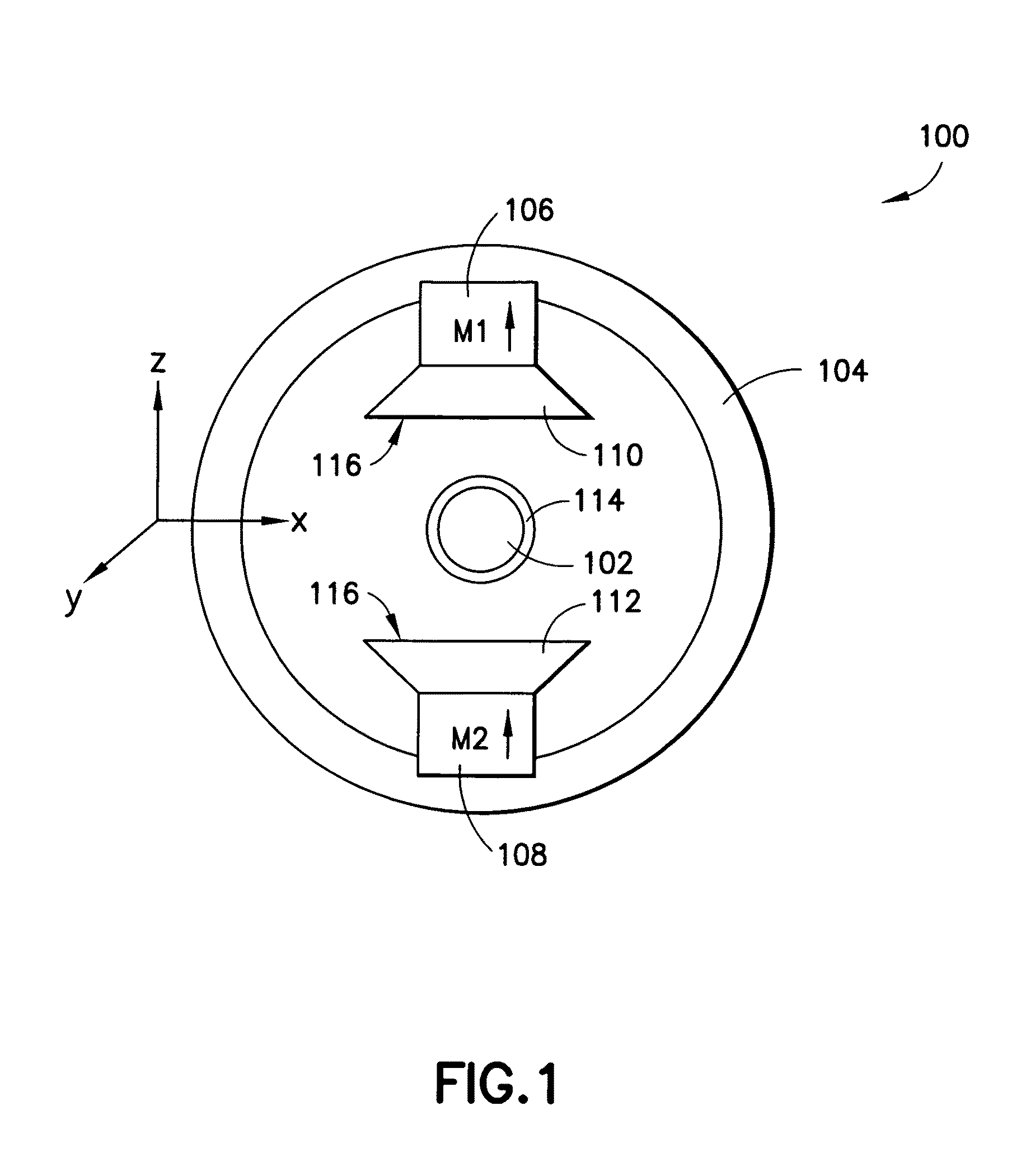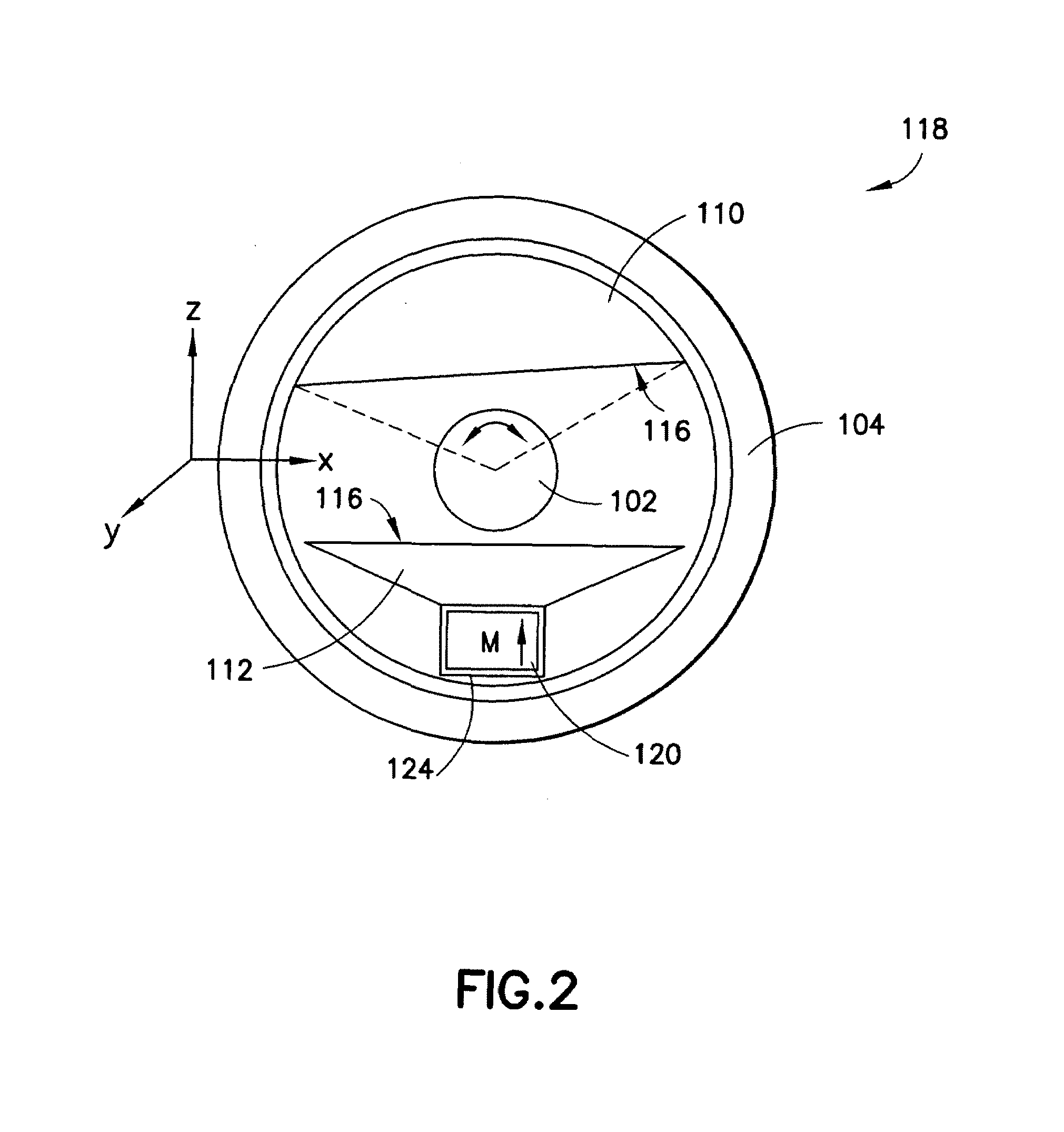Nuclear magnetic resonance module
a technology of nuclear magnetic resonance and modules, applied in the field of nuclear magnetic resonance tools, can solve the problems of unconsolidated sand formations, unfavorable mdt-type sampling tools, and low permeability of heavy oil reservoirs, and achieve low field and relatively low cost design, sufficient signal-to-noise ratio, and low cost
- Summary
- Abstract
- Description
- Claims
- Application Information
AI Technical Summary
Benefits of technology
Problems solved by technology
Method used
Image
Examples
Embodiment Construction
[0022]Embodiments of the invention are directed to a nuclear magnetic resonance apparatus that may be used in connection with a variety of different tools, including a down-hole side-wall coring tool as well as with manufacturing process controllers. Unlike many traditional NMR modules that may be designed around achieving as uniform a magnetic field as possible, embodiments of the NMR apparatus according to the invention may be designed to have an intentionally non-uniform magnetic field in at least one direction. Instead of being substantially uniform, the magnetic field may have a known, and in some embodiments constant, field gradient in one or more directions. The use of gradient fields may allow for a more flexible and inexpensive magnet assembly design, as discussed below.
[0023]It is to be appreciated that this invention is not limited in its application to the details of construction and the arrangement of components set forth in the following description or illustrated in t...
PUM
 Login to View More
Login to View More Abstract
Description
Claims
Application Information
 Login to View More
Login to View More - R&D
- Intellectual Property
- Life Sciences
- Materials
- Tech Scout
- Unparalleled Data Quality
- Higher Quality Content
- 60% Fewer Hallucinations
Browse by: Latest US Patents, China's latest patents, Technical Efficacy Thesaurus, Application Domain, Technology Topic, Popular Technical Reports.
© 2025 PatSnap. All rights reserved.Legal|Privacy policy|Modern Slavery Act Transparency Statement|Sitemap|About US| Contact US: help@patsnap.com



